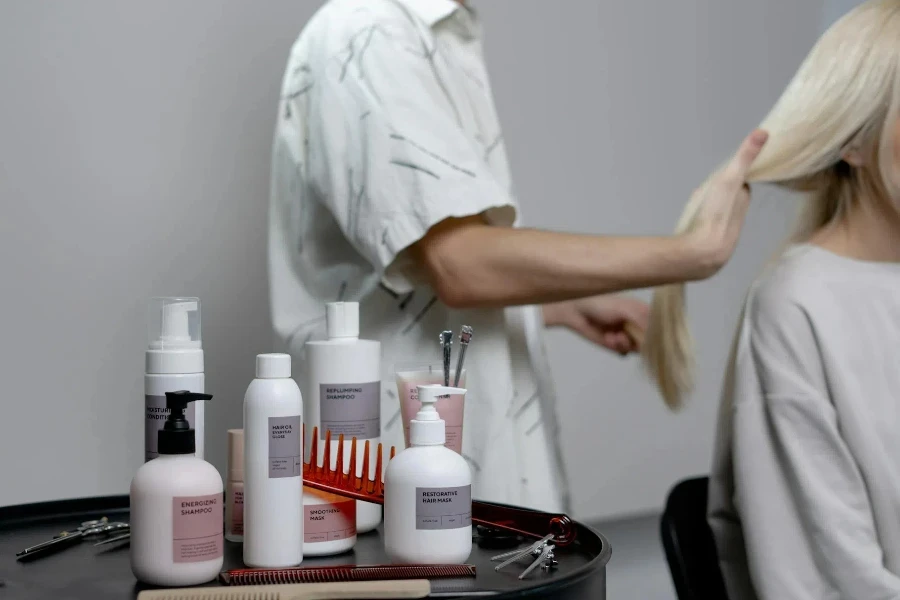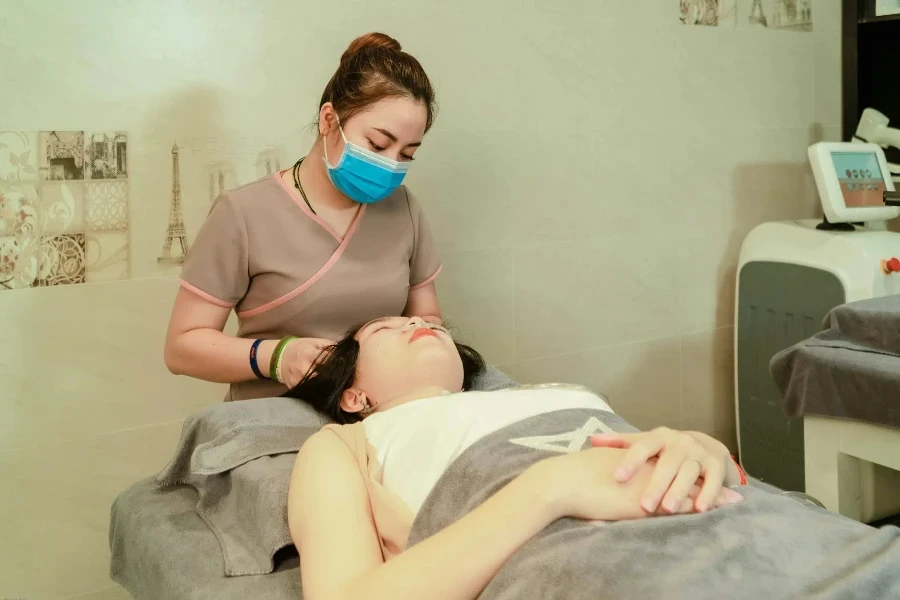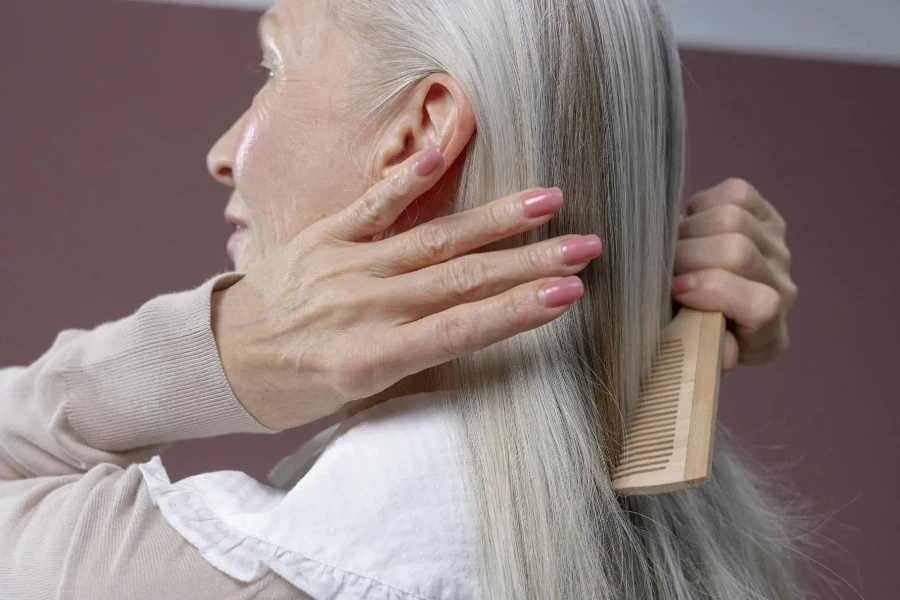Hair loss is a prevalent concern affecting millions globally, driving a surge in demand for effective treatment solutions. As we step into 2025, the hair loss treatment market is witnessing significant growth, fueled by advancements in technology and increasing consumer awareness. This article delves into the evolving landscape of hair loss treatment products, highlighting key trends and market potential.
Table of Contents:
– Exploring the Surge in Hair Loss Treatment Products
– Popular Hair Loss Treatment Products: Types and Insights
– Addressing Consumer Pain Points with Effective Solutions
– New and Innovative Hair Loss Treatments on the Market
– Key Factors to Consider When Sourcing Hair Loss Treatments
– Final Thoughts on Hair Loss Treatment Product Selection
Exploring the Surge in Hair Loss Treatment Products

Defining Hair Loss Treatment: What It Encompasses
Hair loss treatment encompasses a wide range of products and procedures designed to combat hair thinning and promote regrowth. These include medicinal treatments such as over-the-counter and prescription medications, herbal remedies, laser therapy devices, and surgical options like hair transplantation. The effectiveness of these treatments varies based on the active ingredients, technology employed, and the individual’s specific condition or cause of hair loss.
Market Potential: Analyzing Demand Growth
The hair loss treatment market has shown remarkable growth over the past few years. According to a professional report, the market grew from USD 5.63 billion in 2023 to USD 6.03 billion in 2024 and is expected to reach USD 9.38 billion by 2030, with a compound annual growth rate (CAGR) of 7.56%. This growth is driven by the increasing incidence of various types of alopecia, such as Androgenetic Alopecia and Alopecia Areata, which significantly contribute to the demand for effective hair loss treatment products.
The rising awareness regarding the availability of treatment options and the reduction in stigma associated with seeking hair loss treatment have further expanded the market. However, the high cost of advanced treatments, especially surgical options like hair transplantation, poses a challenge to market growth. Innovations in treatment methodologies, including low-level laser therapy (LLLT) and follicular unit extraction (FUE) in hair transplantation, are expected to create new opportunities for market expansion.
Trending Hashtags and Broader Trend Topics
Social media plays a crucial role in shaping consumer behavior and trends in the hair loss treatment market. Trending hashtags such as #HairRegrowth, #AlopeciaAwareness, and #HairLossSolutions are gaining traction, reflecting the growing interest and engagement in hair loss treatments. These hashtags are often associated with broader trend topics like wellness, self-care, and personal grooming, aligning with the increasing emphasis on appearance and self-confidence.
The influence of social media marketing is evident in the rising popularity of brands that promote natural and clinically proven hair growth products. For instance, Curology’s Hair FormulaRx, which leverages a personalized approach through telehealth platforms, has garnered significant attention. Similarly, innovations like Sonicated Platelet-Rich Plasma (PRP) by Hairline International and Pfizer’s LITFULO for treating severe alopecia areata highlight the industry’s commitment to advancing hair loss treatment solutions.
In conclusion, the hair loss treatment market is poised for substantial growth in 2025, driven by technological advancements, increasing consumer awareness, and the influence of social media. As the demand for effective and innovative solutions continues to rise, businesses in the beauty and personal care industry have a unique opportunity to capitalize on this expanding market.
Popular Hair Loss Treatment Products: Types and Insights

Topical Treatments: Ingredients and Effectiveness
Topical treatments for hair loss have gained significant traction in recent years, primarily due to their ease of application and direct impact on the scalp. These treatments often include ingredients such as minoxidil, which has been extensively studied and proven to stimulate hair growth. According to a report by the American Academy of Dermatology, minoxidil is one of the few FDA-approved ingredients for hair loss treatment, making it a staple in many topical solutions. Additionally, natural ingredients like biotin, caffeine, and essential oils are increasingly being incorporated into these products to cater to the growing demand for organic and safe alternatives.
The effectiveness of topical treatments largely depends on the active ingredients and their concentrations. For instance, products containing higher concentrations of minoxidil (5% versus 2%) have shown more significant results in clinical trials. However, the inclusion of natural ingredients also plays a crucial role in enhancing the overall efficacy and safety profile of these treatments. Brands like Himalaya Global Holdings Ltd. have successfully integrated herbal extracts and vitamins into their formulations, offering a balanced approach to hair loss treatment.
Oral Supplements: Pros, Cons, and Consumer Feedback
Oral supplements are another popular category in the hair loss treatment market, offering a systemic approach to combating hair loss. These supplements typically contain a blend of vitamins, minerals, and other nutrients essential for hair health. Ingredients such as biotin, zinc, and saw palmetto are commonly found in these products, with biotin being particularly noted for its role in strengthening hair and promoting growth. According to a professional report, the global market for hair growth supplements is projected to grow significantly, driven by increasing consumer awareness and demand for holistic health solutions.
However, oral supplements come with their own set of pros and cons. On the positive side, they provide a convenient and non-invasive option for individuals looking to improve their hair health from within. Consumer feedback often highlights improvements in hair texture and reduced hair fall after consistent use. On the downside, the results can vary widely among individuals, and it may take several months to see noticeable changes. Additionally, there is a risk of potential side effects or interactions with other medications, which necessitates careful consideration and consultation with healthcare professionals.
Laser Devices: Innovations and Market Reception
Laser devices represent a cutting-edge approach to hair loss treatment, leveraging low-level laser therapy (LLLT) to stimulate hair follicles and promote growth. These devices, which include laser combs, helmets, and caps, have gained popularity due to their non-invasive nature and promising results. According to a report by the Global Anti-Hair Loss Medicine Market, the demand for laser devices is expected to grow at a CAGR of 8.25% through 2029, reflecting their increasing acceptance and market penetration.
Innovations in this category have led to the development of more user-friendly and effective devices. For example, the Current Body’s Hair Growth Helmet uses red LED light to increase the hair growth rate by 128% in 12 weeks, as claimed by the company. Market reception has been generally positive, with many users reporting significant improvements in hair density and thickness. However, the high cost of these devices and the need for regular use can be potential barriers for some consumers.
Addressing Consumer Pain Points with Effective Solutions

Common Concerns: Efficacy and Safety
One of the primary concerns among consumers regarding hair loss treatments is their efficacy and safety. With a plethora of products available in the market, it can be challenging to discern which ones are genuinely effective and safe to use. According to a report by the American Hair Loss Association, many consumers are wary of products that contain harsh chemicals or unproven ingredients, which can potentially cause more harm than good.
Solutions: Proven Ingredients and Technologies
To address these concerns, it is essential to focus on products that contain proven ingredients and leverage advanced technologies. For instance, minoxidil and finasteride are two of the most well-researched and effective ingredients for hair loss treatment. Additionally, the use of natural DHT blockers and growth stimulants, such as saw palmetto and biotin, can enhance the safety and efficacy of these products. Companies like L’Oréal S.A. and Unilever PLC have been at the forefront of incorporating these ingredients into their formulations, ensuring high standards of quality and effectiveness.
Consumer Feedback: Real-world Effectiveness
Real-world consumer feedback plays a crucial role in validating the effectiveness of hair loss treatments. According to a survey conducted by the National Alopecia Areata Foundation, a significant percentage of users reported positive outcomes after using products containing minoxidil and biotin. Furthermore, the destigmatization of hair loss and the growing acceptance of treatment products among younger demographics have contributed to increased consumer satisfaction and market growth.
New and Innovative Hair Loss Treatments on the Market

Breakthrough Products: What’s New and Exciting
The hair loss treatment market is continually evolving, with new and innovative products being introduced regularly. One of the most exciting developments is the emergence of products that combine traditional ingredients with cutting-edge technologies. For example, Triple Hair Group Inc. recently launched Plenty Natural, a line of patented and clinically proven natural hair growth products for women. These products incorporate natural ingredients that prevent thinning and stimulate hair growth, offering a holistic approach to hair loss treatment.
Emerging Technologies: The Future of Hair Loss Treatment
Emerging technologies are set to revolutionize the hair loss treatment market. Advances in trichology have led to the development of innovative product formulations that offer improved efficacy. For instance, the use of DNA synthesis to stimulate hair follicles, as seen in CosmeRNA’s Hairloss Tonic, bridges the gap between medicine and cosmetics. Additionally, the integration of LED scalp masks and scalp stimulating tools into treatment regimens is expected to enhance the overall effectiveness of hair loss solutions.
Market Reception: Early Reviews and Feedback
Early reviews and feedback for these new and innovative products have been overwhelmingly positive. Consumers have reported significant improvements in hair density, thickness, and overall health after using these advanced treatments. The market reception has been particularly strong in regions like North America and Asia-Pacific, where high consumer awareness and disposable incomes drive demand for premium hair loss solutions.
Key Factors to Consider When Sourcing Hair Loss Treatments

Quality and Certification: Ensuring Product Standards
When sourcing hair loss treatments, it is crucial to prioritize quality and certification to ensure product standards. According to a report by the American Academy of Dermatology, products that are FDA-approved or have received certification from reputable organizations are more likely to be effective and safe. Business buyers should look for suppliers that adhere to stringent quality control measures and have a proven track record of compliance with regulatory standards.
Supplier Reliability: Building Trustworthy Partnerships
Building trustworthy partnerships with reliable suppliers is essential for sourcing high-quality hair loss treatments. Companies like Procter & Gamble and Taisho Pharmaceutical Holdings Co., Ltd. have established themselves as reliable suppliers in the market, offering a range of products that meet the diverse needs of consumers. Business buyers should conduct thorough due diligence, including supplier audits and reference checks, to ensure they are partnering with reputable and dependable suppliers.
Cost and Scalability: Balancing Budget and Demand
Balancing budget and demand is a critical factor when sourcing hair loss treatments. While premium products may offer superior efficacy, they can also come with a higher price tag. Business buyers need to consider the cost-effectiveness of the products and their scalability to meet market demand. According to a report by the Global Hair Growth Supplement and Treatment Market, the market is expected to grow at a CAGR of 6.24% through 2028, indicating a rising demand for cost-effective and scalable solutions.
Final Thoughts on Hair Loss Treatment Product Selection
In conclusion, the hair loss treatment market is poised for sustained growth, driven by advancements in product formulations, the rise of personalized treatment solutions, and the growing emphasis on natural and organic products. Business buyers must prioritize quality, certification, and supplier reliability when sourcing hair loss treatments to ensure they meet consumer expectations and regulatory standards. By staying abreast of market trends and emerging technologies, businesses can capitalize on the expanding opportunities in this dynamic and evolving market.




